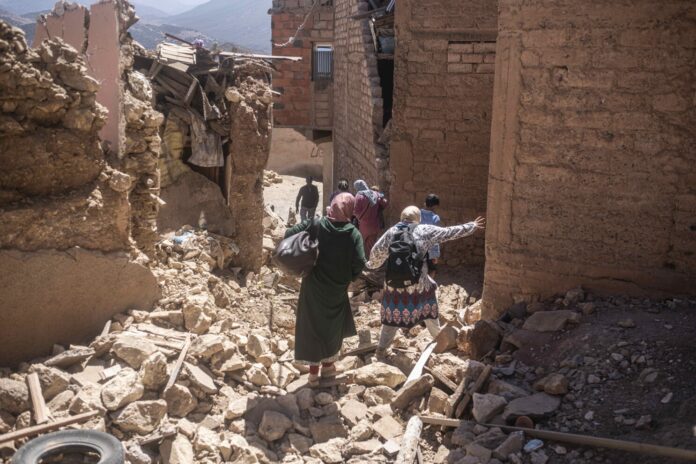
The shocking 6.8 earthquake struck Morocco recently and converted cities into rubles in minutes. Not only has Morocco been rocked, but the incident has sent shockwaves throughout the length and breadth of North Africa. It was a rare disaster in that part of the world, but it left a trail of destruction and helplessness. It was a reality check for the human race on how unprepared it is to face the unprecedented events of nature. If you wish to understand how this sudden catastrophic event of nature happened, read this article thoroughly.
1. Unearthing the Cause
To comprehend the seismic upheaval that rocked Morocco, we must first fathom the complicated dynamics of tectonic plates. Experts in the field believe that the African plate, a massive geological entity, moved northward and collided forcefully with the Eurasian plate. This collision was the earthquake’s epicentre, triggering catastrophic events.
Paula Marques Figueiredo, a geologist specialising in active tectonics and neotectonics, explains that the earthquake resulted from a reverse fault. This geological phenomenon occurs when the edge of one rock mass slips beneath another along a fault line. In Morocco’s case, the Morocco and Iberia microplates, both constituents of the larger African plate, collided in a dramatic fashion. As these plates pushed against each other over millennia, tension built up. Like strained ropes, the fault lines can only endure so much before releasing the accumulated stress. In the form of an earthquake, this release is nature’s way of restoring equilibrium.
2. The Tremors and Aftershocks
Seismologist Remy Bossu warns that the aftermath of such a significant seismic event is far from over. Aftershocks are expected to rattle the region for weeks to come, prolonging the agony of those affected. While their intensity may diminish with time, the risk remains ever-present.
Mehdi Zare, a professor at an Iranian-based institute that concerns mainly earthquakes, said there was movement in the Earth Crust at shallower and deeper levels. It gave rise to decollement characterised by the slipping and folding of the Earth’s crust. It is a term derived from the French Language. The shallow decollement, located between 1 to 4 kilometres beneath the surface, and the deeper decollement at depths ranging from 10 to 20 kilometres, played pivotal roles in the earthquake’s progression. Most likely, the decollements initiated at the deeper level and gradually moved towards the surface, intensifying the earthquake’s impact.
3. The Devastation Unleashed
The earthquake’s aftermath is nothing short of catastrophic. Thousands of people have been left homeless, and many had to evacuate their homes, fleeing for safety. Authorities declared three days of mourning as they grappled with the enormity of the situation.
The hardest-hit area, Al-Haouz, bore the brunt of the destruction. However, other provinces, including Ouarzazate, Azilal, Chichaoua, and Taroudant, were also severely affected. Some remote villages were entirely wiped out, presenting formidable challenges for rescue teams attempting to reach survivors.
4. A Rare and Lethal Event
Morocco has not witnessed an earthquake of this magnitude and lethality in over six decades. The last comparable event occurred in 1960 when a 5.8 magnitude quake struck Agadir. Although of a lower volume, it caused a substantial number of casualties due to the structural vulnerabilities of buildings at the time.
Sadly, the magnitude of this catastrophic event was around 6.8. According to credible studies, there has been no record of any such circumstance in the vicinity (300km) of the epicentre of this earthquake.
5. Mountains and Fault Lines
Figueiredo offers an analogy to help understand why earthquakes like these occur in regions of tectonic convergence. She likens it to pushing one’s fist against a wall. The pressure gradually builds until the wall breaks or the hand moves upward. In settings of tectonic convergence, such as Morocco, mountains are formed over millennia due to this continuous pressure.
She also highlights the complexity of the North Atlas fault, a system extending over 100 kilometres with numerous minor imperfections, some of which may not have been mapped. This complexity can obscure that the region lies within a fault system, and even geological evidence may erode over time.
In conclusion, Morocco’s rare and deadly earthquake serves as a grim reminder of the Earth’s volatile nature. As experts continue to study its aftermath, the people of Morocco face the near-impossible task of restoring their everyday lives. They are carrying out rescue operations on their own with inadequate facilities.












